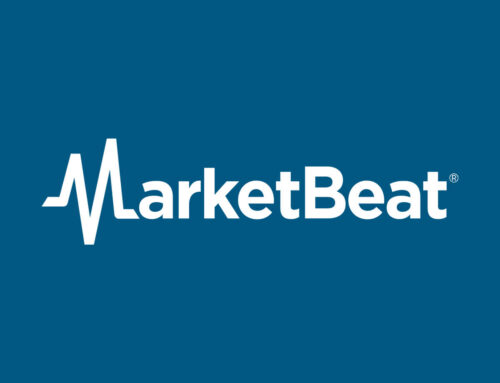Fidelis Capital CIO Reveals HNW Portfolio Strategy
October 7, 2025
Fidelis Capital CIO Reveals HNW Portfolio Strategy

Fidelis Capital founding partner and CIO Matt Michaels
Fidelis Capital, a Tampa, Fla.-based RIA with $2.3 billion in total AUM, was founded three years ago by veterans from the world of private banking. The partners’ collective experience is part of what has enabled the firm to manage most of its equity and fixed-income allocations in-house, cutting out the extra costs to the clients, according to Matt Michaels, founding partner and CIO.
While Fidelis serves institutions, non-profit investors and family offices, its individual clients tend to be multigenerational families with a net worth ranging from $15 million to $30 million with complex asset holdings and tax situations.
WealthManagement.com recently spoke with Michaels to discuss how Fidelis approaches these clients’ portfolios.
This Q&A has been edited for length, style and clarity.
WealthManagement.com: Can you give me a sense of who your average individual client is?
Matt Michaels: In the DNA of Fidelis Capital is that all of our partners previously worked inside private banks. We tended to work with families that had achieved a high level of success, so higher-net-worth. They tend to have more complicated situations. We found that in the private bank industry, we were forced to treat all clients the same and fit them into similar investment models. We currently have assets under management just shy of $2.3 billion. We are serving somewhere in the neighborhood of 130 families. For some of those families, we serve multiple family units, so there could be several clients within each family.
We have a number of relationships that are north of $100 million. Our average relationship is somewhere in the $15 to $30 million per household range. The median net worth would be somewhere in that $25 million-plus range. The commonality across our clients is they are typically multi-generational, have a lot of things going on in their world, investment may play a significant part of that, or maybe they’ve got closely held businesses or real estate assets. All of them need advisors who have the experience to handle those complexities and, most importantly, the ability to tailor those solutions to the family.
WM: What’s typically in your model portfolio? Can you break it down by asset class?
MM: We believe that the most important return the investor will get is the one they get net of fees, taxes and inflation. When it comes to fees, we believe the traditional asset classes of fixed income and equities are hard to pay a third-party manager and generate a rate of return at a fair fee and net of the advisor’s fee that leads to any kind of consistent outperformance. So, we manage most of our fixed-income and equity assets in-house.
Chris Gunster, who runs our tax-aware fixed-income strategy, will go and buy bonds, whether they are taxable or tax-free, based on the marginal tax rate of each individual client. Then, because we are buying individual bonds, we have the ability to tax-loss harvest. Because markets are volatile, like earlier this year when municipal bonds were trading lower because of all the new issuance, we were able to harvest a loss. [That] gave our clients a tax benefit, and we immediately reinvested in a new fixed-income solution that would give them a more attractive yield.
That is predominantly how we manage those portfolios on the fixed-income side. It’s not necessarily a model from the standpoint that each client’s tax situation will be a little bit different. But because we are serving fewer families, we are able to tailor that.
WM: You mentioned that in a lot of cases, working with a third-party manager doesn’t deliver the net of fees returns you are looking for. What kind of returns are you targeting on the fixed-income and on the equity side?
MM: There are managers that fit niches that demonstrate straight outperformance; they are just hard to find. And, in our experience, they are hard to be in at the time that they do really well. So, in the fixed-income market, we’ll typically track the appropriate benchmark for our clients. If a client is normally a tax-free, municipal bond investor, we’ll look at the muni one- to 10-year average index. But we are also going to look to include bonds that are on the taxable side if it makes sense for the client, based upon the current yield structure. This year has heavily favored municipal bonds for high-net-worth clients, but there are definitely periods of time when that gets a little bit out of whack. So, that tends to be more of a market benchmark approach with the ability to do some tax loss harvesting.
When we go into the equity market, it’s totally different. We’ll often do a lot of that asset management in-house, but we have multiple approaches to serve different clients. We do our own direct indexing with tax loss harvesting. There are providers that do that really well, but all of those providers charge incremental fees. Many of those fees are greater than the fees you would pay in an index fund. We can do it for clients without having to charge that additional fee.
For those types of clients, we will pick a benchmark, whether it’s the Russell 1000 or the S&P 500 or the Russell 2000, and we will track that index and maximize tax loss harvesting, if and where that makes sense. But we also have strategies for clients that are interested in performing relative to a benchmark. So, maybe it’s inside a qualified account, so tax loss harvesting is not as beneficial. Or, for a client that’s just more interested in growth, we do have a large cap growth strategy, a large cap core strategy, a dividend growth strategy. For each of those strategies, we narrow the number of names we are going to buy. We use quantitative research to try to overweight names that we think will give us the ability to outperform a benchmark, just like an outside manager would, but without that additional fee or expense.
WM: I understand you have considerable investments in private markets on behalf of your clients. Can you talk about which asset types you are invested in?
MM: For a number of years at my previous firm, I did a lot of allocating to private markets, so I have a decent amount of experience in that space. That world has changed dramatically. It used to be only illiquid drawdown vehicles, and now you’ve got these perpetual semiliquid evergreen funds. You even have ticker-based funds—the world has evolved. But for the types of clients we served in the past, using liquid alternatives did not give the exposure we were looking for, so we almost exclusively had to go into drawdown funds. However, over the last few years, we’ve seen this democratization in the space and the rise of the evergreen funds. We do believe there are a lot of fund families that have created very innovative, cost-effective ways of getting good access to the space. For us now, it’s not, “Do we use one or the other?” We often use both in combination, and they both play different roles.
There are four areas where we typically invest in private markets: private real estate, private debt, private equity and infrastructure. Some clients may do some stuff in the hedge fund space, but it’s not broad-based. To us, hedge funds tend to be more risk reducers, and for our clients with multigenerational wealth, it’s less of a concern. They are looking at long-term compounding the capital.
A lot of our families have real estate. Or they do some of it on the side. For some of our families, we’ll try to complement that, and we’ll look at things like industrial real estate, or some kind of opportunistic real estate. But it tends to be a little bit smaller part of the book of our business—about 6% of our allocations as a firm fall into that bucket. The one thing that’s a bit deceiving about those kinds of numbers is we have some families that have their own family offices. They are sourcing their own private markets, and we don’t really play that role, which skews our numbers lower. I would say most of our families that are interested in private markets are typically not going to be less than 10%, and can go pretty high to 30%, 40%, 50%.
If we have a client who comes to us with cash and says, “How would you build a private markets portfolio?” We start with the thought that private markets are not for everybody, but they are not for nobody. I think a lot of advisors never have that conversation because historically it’s been a tough asset class to access. We try to have a conversation up front to figure out if the client is the right fit for it. We talk about private markets with every client, but not every client gets it.
If you are going to use a drawdown fund, that takes years. And it takes a lot of experience to know how many funds to commit to over how many different years, so you get vintage year diversification and strategy diversification. Clients have to be comfortable with illiquidity and late K-1s. That’s not every client. But the evergreen funds are a great way to get immediate exposure to dollars. We will often start with a conversation around—are there private real estate, private debt, private equity evergreen-type structures that have semi-liquidity that can get our clients at least access to those spaces? And over time, we will complement that with drawdown funds.
Something we are really excited about is that we are now the subadvisor of our very own private equity drawdown fund. We had experienced in the past that clients who invested in illiquid private equity didn’t always have the best experiences. They didn’t know what they were invested in. It was hard to get updates. Our investment committee will find the opportunities and place them into this vehicle that we are sub-advising, so that clients can get a more efficient access to assets we think are interesting in the illiquid space to complement those evergreen funds.
WM: You said most of the time when it comes to fixed income and equities, you don’t work with third-party asset managers. What are the exceptions to this?
MM: Like most independent firms, we do have open architecture and the ability to go outside. We will, in some cases, do that for mid-cap and small-cap investments. When it comes to international and emerging markets, we will typically use either actively managed ETFs or mutual funds. That’s not an area where we are going to be buying individual securities in most cases.
When it comes to high yield in the fixed-income space, we will typically use a mutual fund and we have a few that we have some comfort level with.
By the way, if a client says, “I really like these two managers,” we’ll use those two managers. The reason we do some stuff in-house is obviously we don’t charge our clients a fee or expense for it, so it’s not about anything other than trying to allow our clients to keep more of the return. I don’t know this to be a fact, but my observation is that the managers that have the best performance tend to get that performance in small periods of time, and most of the time, people want to fire them.
WM: When it comes to private markets, how do you choose which asset managers you want to work with?
MM: A lot of that is just long-term relationships. Back in the day, families would want small boutique strategies because they believed that’s where the best performance came from. You could make an argument that with the drawdown funds, there’s an element of truth to that. With the evergreen funds that are just popping up on the market, I want to be with the big, well-known, well-established firms like the Blackstones of the world. It’s a meaningful part of their business. They are going to be responsible with the way they manage the liquidity, and at the end of the day, I almost view the evergreens as the equivalent of investing in beta in public markets. What you are getting is exposure to the market, so I want to be with the big, well-established firms that we have long-standing relationships with.
It’s not to say that we won’t have conversations with smaller companies. We’ll have multiple meetings with our investment committee and try to get to a place where we are comfortable. When it comes to us sub-advising and choosing some of the drawdown funds, we partner with an outside due diligence firm that helps us ensure that we are doing the background checks, that we understand the record, that we do the on-site visits.
WM: How often do you update your clients’ allocations?
MM: One of the things unique to us is we have a seven-person investment committee. I help to lead that. On our investment committee, we have six former financial analysts. We meet every week and talk about our outlook and allocations. And then our portfolio managers who sit in each of the markets could implement those strategies as they make sense for clients.
Once a month, we publish our own market outlook report to help communicate our thoughts. We try to do quarterly webinars for our clients. For some of our clients, we write up weekly updates. All of us were portfolio managers for a long time as opposed to financial advisors, so we get into the weeds a little bit.
Having said that, it’s not as though we go into all the portfolios across the company and are making major shifts all the time. We do want to rebalance. Most of the time, those rebalances will be assessed quarterly, but executed when there is volatility in the markets. We did a lot of trading during the downturn in March, April and May—rebalancing, tax loss harvesting. We are always in there trying to right-size that ship.
WM: I believe your firm invests in cryptocurrencies. Can you tell me which cryptocurrencies you are invested in and what form those investments take?
MM: It tends to be more client-driven at this point than investment committee-driven. We have some clients that own sizeable cryptocurrency positions that we learn a lot from. We have bought into the fact that it’s not going away. It is quickly evolving, especially with the rise of stablecoins. What we struggle with is having a tactical viewpoint on it. What we do is help clients that want allocations get them.
To the extent that clients want to physically hold Ethereum or Bitcoin, our custodian, Fidelity, will custody the asset. Many of our clients will utilize ETFs or closed-end funds to hold things like Bitcoin and Ethereum.
WM: When it comes to international markets, are there certain themes you are pursuing in the ETFs and mutual funds you are invested in?
MM: We always felt that some of the big institutions mandated a heavier allocation outside the U.S. than was merited at the time. It’s not uncommon if you are in one of the model portfolios at a big financial firm that you are going to have somewhere 30% or 40% international exposure relative to domestic. We tend to have more of a home country bias. I recognize this year that has not paid out as well. It’s not like we are this extreme underweight [when it comes to international]. We are probably somewhere in the 15% to 20% range of international to domestic.
As far as themes go, we do lean a little bit more into the emerging markets. We are intrigued by the Pacific Basin and going into South America. Not necessarily China or India. And we also like the idea of having some of that currency exposure. We’ve seen a weakening of the dollar now. It seems that is long overdue.
WM: Do you hold any cash?
MM: Obviously, a lot of our clients hold cash. Usually, we will hold that cash in non-managed accounts. In the managed bucket, we will typically hold 1% to 3% in cash, depending on the client. We tend to keep cash minimal. But that is one of those things that is very client-influenced. We do have some clients that like to have more cash on hand to be opportunistic and they are okay with being on the sideline during some run-ups in markets. On average, most of our clients are under 3% across our book.
You May Also Like
Search
RECENT PRESS RELEASES
Related Post




